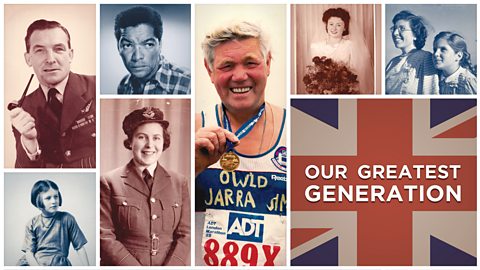
To mark the 70th anniversary of VE Day in 2015, the ΒιΆΉΤΌΕΔ broadcast a four-part television series called 'Britain's Greatest Generation'.
Six of the incredible people from that series now tell their epic life stories of their experiences of the war for a younger audience.
Suitable for teaching history at KS3 and GCSE in England, Wales and Northern Ireland and 3rd/4th Level and National 4/5 in Scotland.
The videos and the suggested approaches will support key aims of the curriculum across the different national curricula of the UK, in developing pupilsβ abilities to:
- Deepen their chronologically secure knowledge and understanding of British, local and world history, so that it provides a well-informed context for wider learning
- Understand the complexity of peopleβs lives, the process of change, the diversity of societies and relationships between different groups, as well as their own identity and the challenges of their time
- Pursue historically valid enquiries including some they have framed themselves
- Create their own structured accounts, including written narratives and analyses
- Understand the methods of historical enquiry, including how evidence is used rigorously to make historical claims, and discern how and why contrasting arguments and interpretations of the past have been constructed
- Develop critical thinking and analysis of evidence

Teacher Notes
Before Viewing:
- This collection would be ideal to develop skills and knowledge supporting pupilsβ understanding of the complexity of peopleβs lives, the process of change, the diversity of societies and relationships between different groups, as well as their own identity and the challenges of their time.
- Study World War Two in overview: key events and aspects, such as the causes of the war, the civilian experience, the role of women, and the contributions of Empire citizens.
- Study in depth, specific areas to support knowledge in the analysis of the sources. Useful areas to study include evacuation, enlisting and the home front.
- A key prior study, at least in overview, would be British society of the 1930s: itsβ norms, make up, social divisions and conventional expectations.
- You may wish to focus on the provision of knowledge the films provide at face value and their relative and collective value. Alternatively, the clips can be analysed to consider second order analytical skills. These include change and continuity, similarity and difference, and significance. Evidence can clearly be analysed in a variety of ways and your planning will determine your choices.
- An illustrative suggestion is to consider using the films to establish their utility. What do they tell us, how far are they limited in what we learn? How reliable is the evidence provided? How far might source provenance influence the utility and reliability of the content?
- Build a glossary of relevant key vocabulary, such as evacuation, enlist, Dunkirk spirit, Blitz as used in the contexts of the films. Terms such as 'social norms' and 'class differences' will need to be clarified to equip pupils with the necessary conceptual thinking base.
During viewing:
To focus and drive active viewing, suggest a historically valid question to guide the enquiry. You might offer three alternatives, two of which are red herrings. This is to draw out from your class what actually is a valid question.
An example of a valid question:
- How far is it accurate to suggest that World War Two was a catalyst for progress in British society?
This invites pupils to use their knowledge to consider what progress might have been in the historical context. Then, equipped with reasoned criteria, analysis and judgements may be pursued.
- How far is it accurate to suggest that World War Two was a catalyst for progress in British society?
Note that to consider progress, pupils would need to have a broad understanding of society in pre-war Britain.
Invite pupils to develop a key enquiry question based on what they have learned so far, and see if they can answer from the new film evidence.
A table might be useful to direct pupilsβ focus. It might move from knowledge acquisition notes, through to higher level second order skills. An evidence based scoring tariff to assist in the assessment of each film, will guide analysis towards your learning objectives. Subsequently, contrast and compare the filmsβ values, to build an overview and summative reasoned analysis that addresses the initial key question.
An example:
| Source film | What was their life like before WW2? | What new opportunities did they have? | How far did their lives progress according to our definition? /5 | How far might each person's change be representative of this issue in society? /5 |
|---|---|---|---|---|
| Jim Purcell: poverty | ||||
| Dorothy Hughes: women's equality | ||||
| Konnie Ho: social mobility |
Pupils make notes from viewing the films, then score the value of their research in the last two columns (1=weak to 5=excellent), as the evidence furthers their ability to answer the key question. You can adjust the column content to reflect your choice of focus. This will also help compare the areas of British society where they consider progress to be greatest.
- The films will variously introduce new knowledge or confirm/question existing knowledge or assumptions, thereby being more or less useful or limited. The circumstance of the witness may enhance or undermine the credibility (and therefore value) of the evidence.
- To further extend critical thinking, the class can be encouraged to discuss the idea that the sources may help with other enquiries even if they are considered to be limited for the current one.
- You will probably be selective in the films used to those which address your theme. Alternatively, you may compare and contrast the experiences of different interviewees when discussing the same topic.
- It can be useful to show the selected films twice. Once to take in the content, then again to take notes and analyse.
- You may choose to organise the exercise into pairs or groups to stimulate discussion and reasoning skills.
After viewing:
- Pupils summarise what they have learned from the films. This exercise can begin at the foundation level of apparent knowledge learned and then be developed through stages of higher level analysis, reflecting the design of the table used during viewing.
- _All reasoning should use examples from the films and ideally, existing prior knowledge, to assess the value of the new evidence towards the enquiry.
- Contrasting sources such as contemporary accounts, official government accounts, reports from the press and newsreels, visual versus written evidence, could be analysed in a similar way to broaden and deepen the analysis of different voices or indeed alternative types of evidence.
- Another opportunity is for the class to compare other similar sources such as Anne Frankβs diaries, or the film 'Hope and Glory', a fictional account of filmmaker John Boormanβs childhood memories during WW2. Such activities can deepen and secure, knowledge and understanding of content and source type.
SEN and Supported learning:
- Differentiate your grid with one focus of knowledge learned from the films. This can then be extended to perhaps consider how the new learning compares with earlier knowledge. Does it confirm or question what we knew?
- The group ideas previously mentioned can promote all abilities to contribute and build confidence. They can also expose the class to different perspectives of analysis.
- Writing frames or cue cards linked to the analysis frame used during viewing of the films may also support the construction of balance and reasoned discussion and summaries.
- Consider selecting fewer or more sources from the collection, depending on pupil abilities and aptitudes.
Further development:
- ΒιΆΉΤΌΕΔ Teach resources offer a wide range of collections facilitating opportunities to focus more specifically on particular disciplines of history. This might be substantive knowledge or second order concepts such as continuity and change. Both the World War 2 Stories and The Last Survivors collections would ideally support a consolidation and development of the historical enquiry methodology used, but emphasising certain skills concepts over others to explicitly build up these discrete skills.
- Clearly, second order skills cannot be taught separately from the knowledge of history, but creative and rigorous planning must include and allow them all to be visited. Depending on your planning you can select where and when you place emphasis.
- Your class might be offered the chance to create their own snapshots of life today, focussing on recent social changes of their local community or wider UK society. This can lead to debating skills enhancement, as various conclusions are proffered and weighed up by the group.
Jim Purcell: The boy with no shoes. video
For Jim Purcell, life after the war was far more comfortable than the years preceding it.
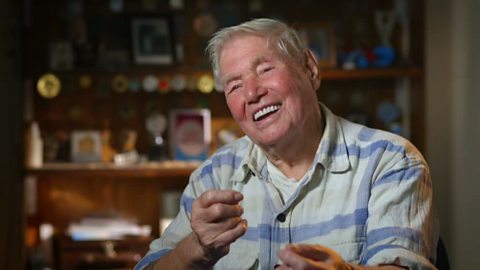
Dorothy Hughes: The girl who broke the rules. video
The story of how Dorothy Hughes came to be one of the first female Chelsea pensioners.
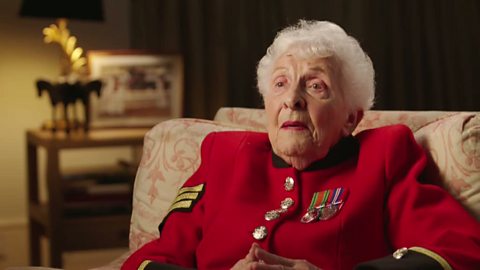
Gus Bialick: The boy who loved Britain. video
Throughout his life, Gus remained fiercely committed to the values for which Britain fought.
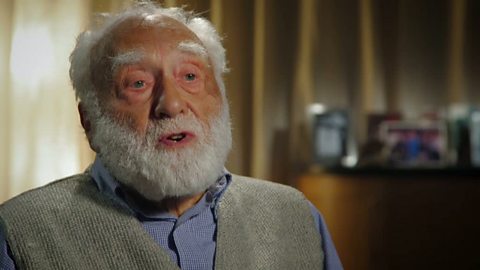
Elaine Kidwell: The girl who loved the Guides. video
Being a Girl Guide equipped Elaine for a vital role during wartime and in the years afterwards.

Konnie Ho: The girl from Chinatown. video
Evacuation and marriage gave Konnie a different life to the one she had before the war.
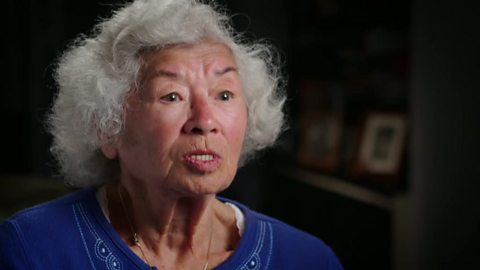
Freddie Hunn: The boy who loved poetry. video
Freddieβs love of poetry drove him to join the army and helped maintain morale during the war.
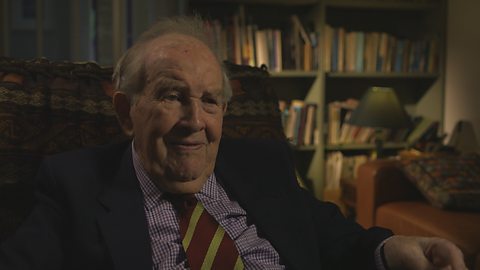
Where Next?
WW2 Stories. collection
These short videos feature the personal testimony of 11 veterans and eye-witnesses of World War Two.
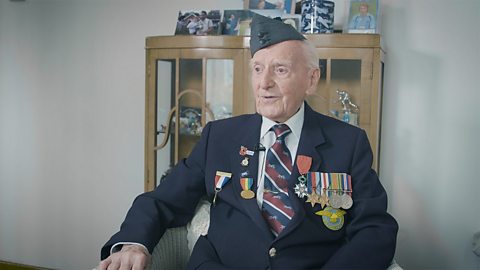
Bitesize
Use these Bitesize resources to set homework, independent study tasks or to consolidate learning for your pupils.

Newsround
The latest news stories from Newsround to share in the classroom.
